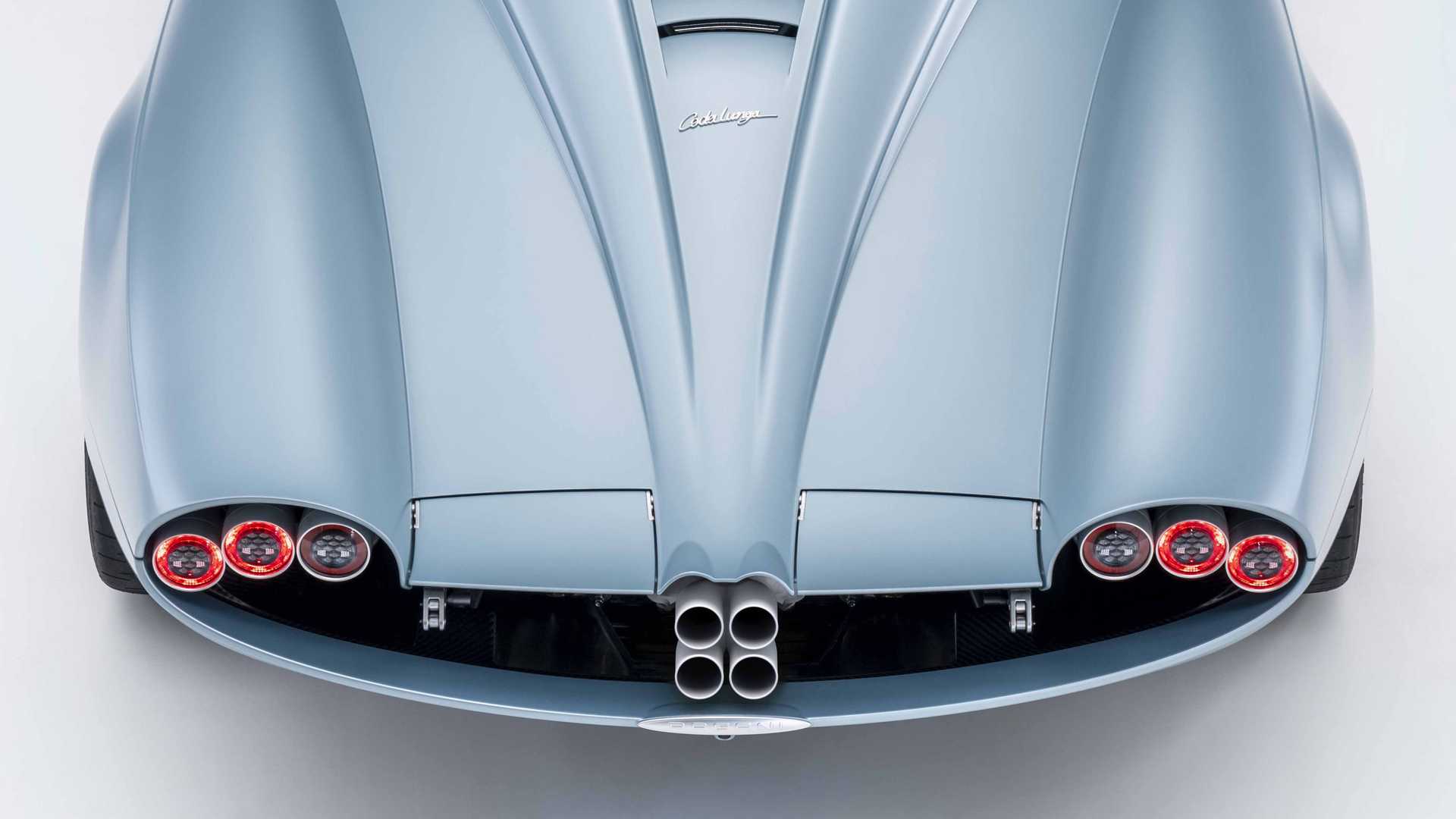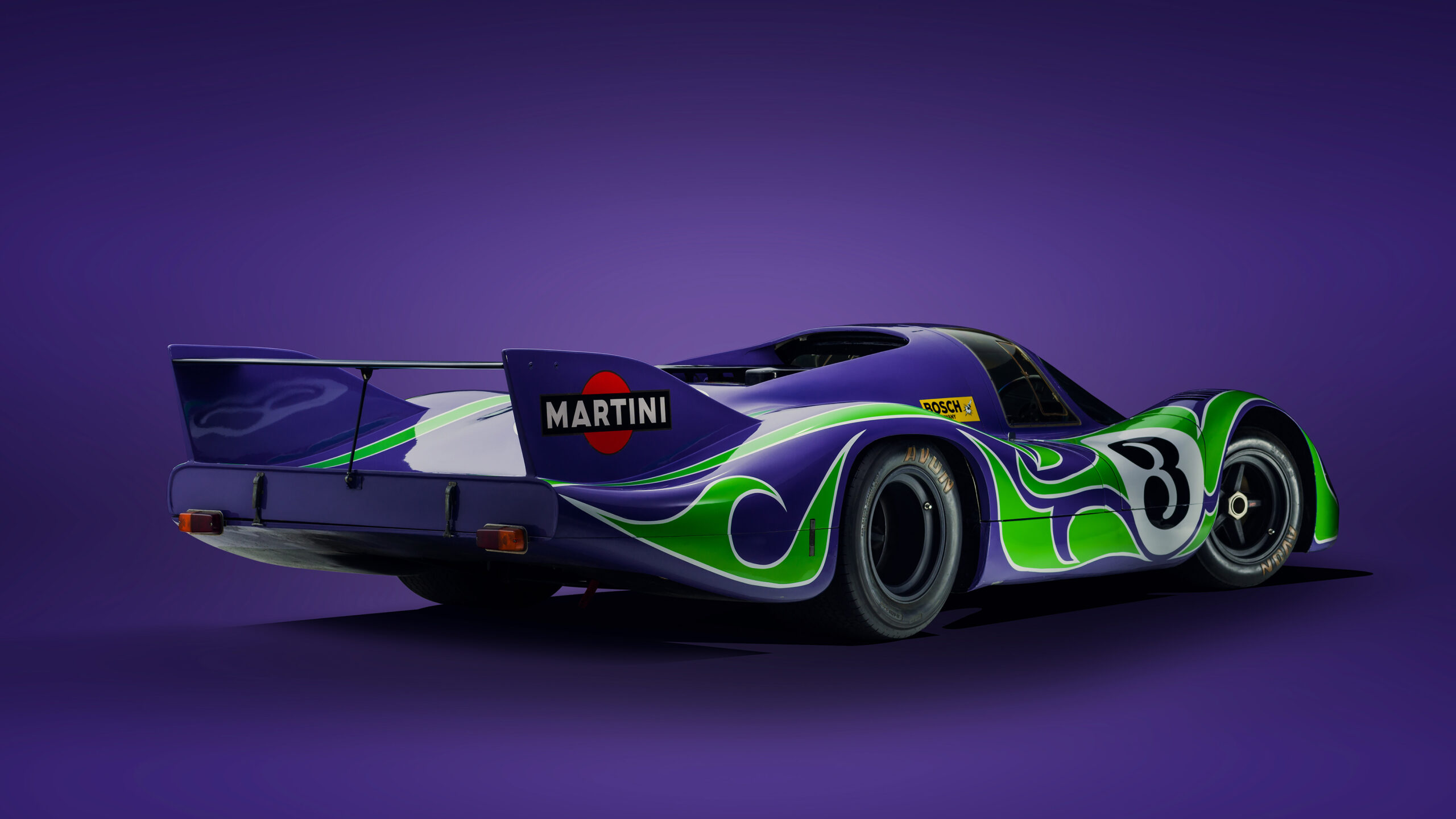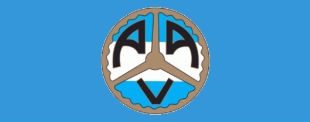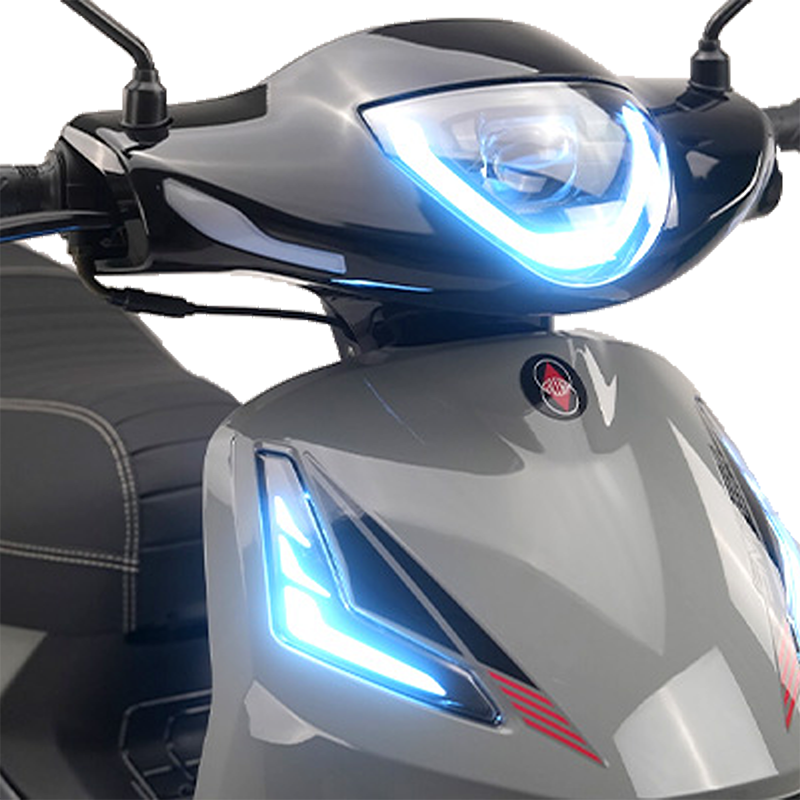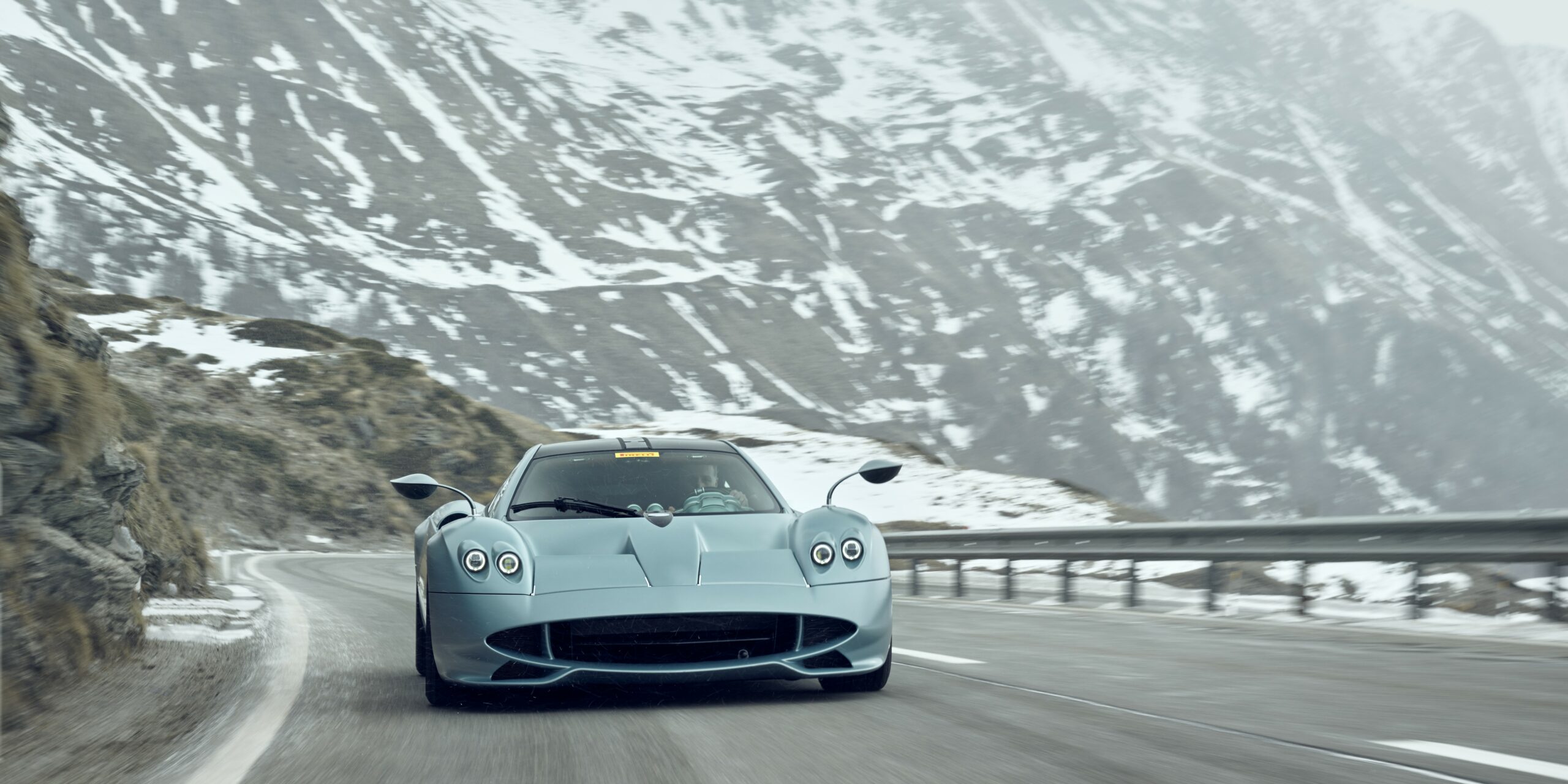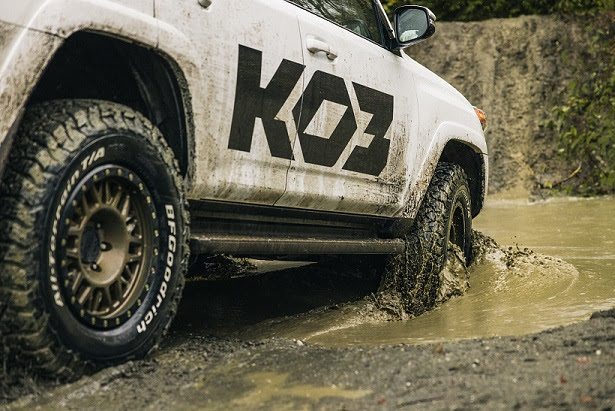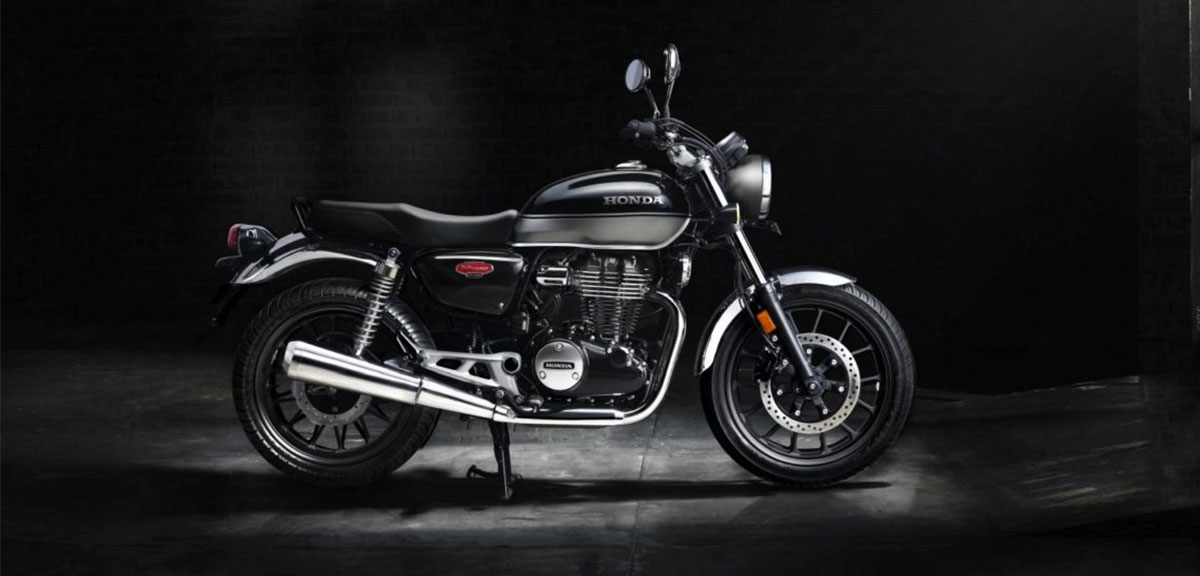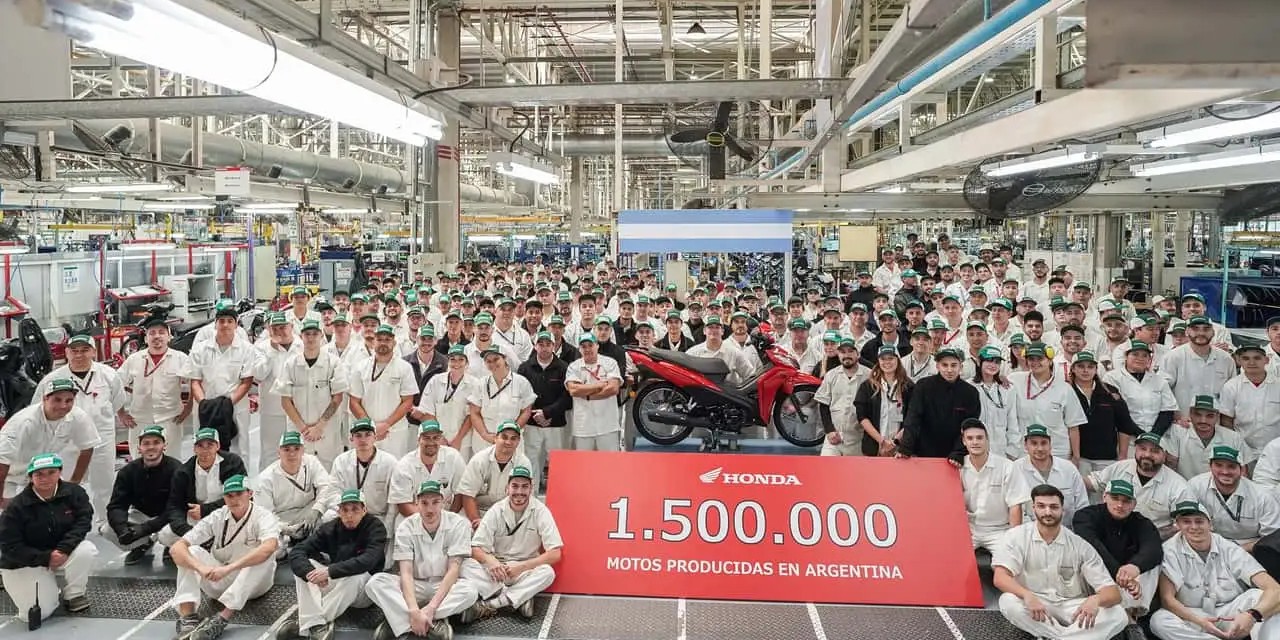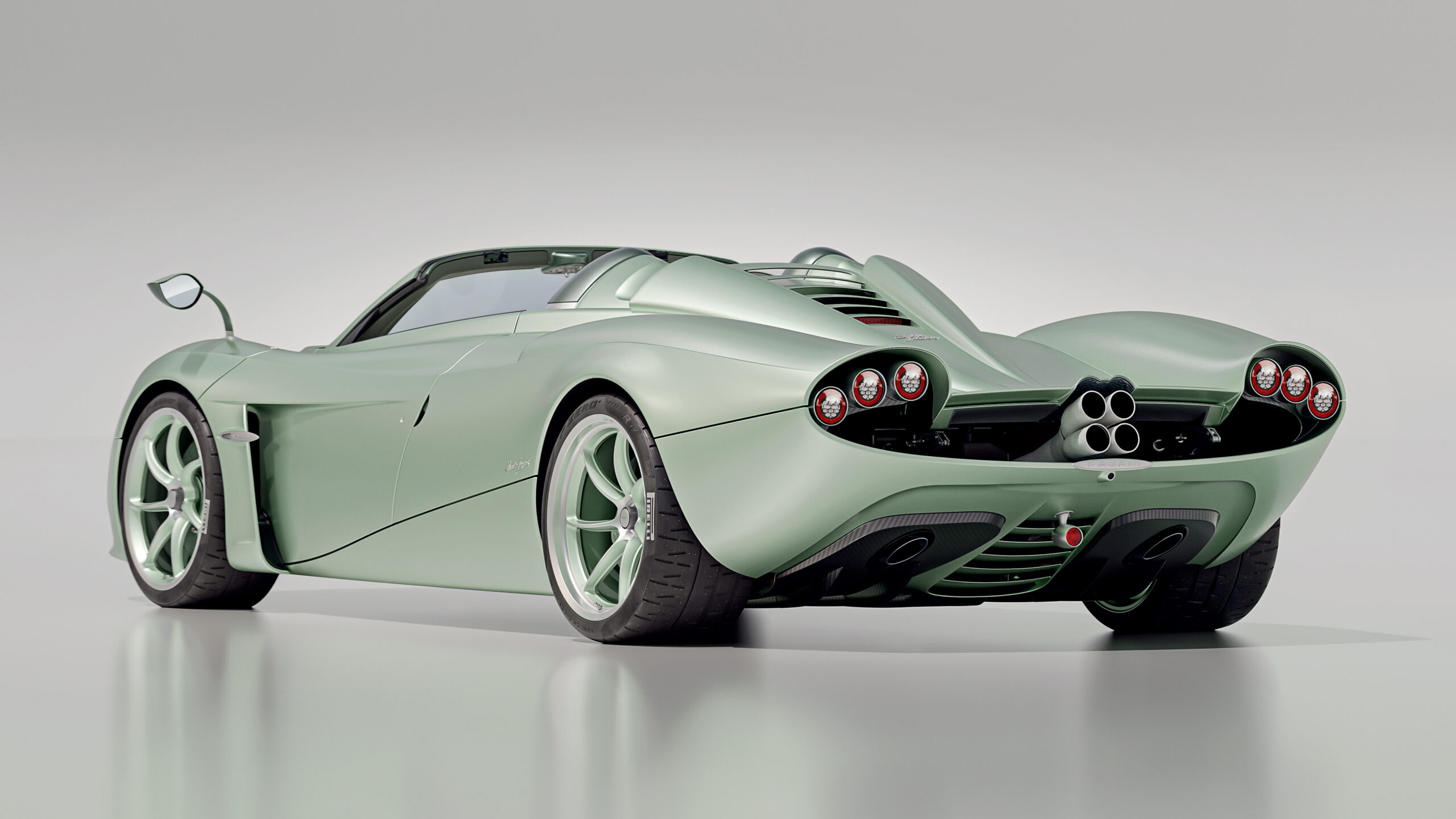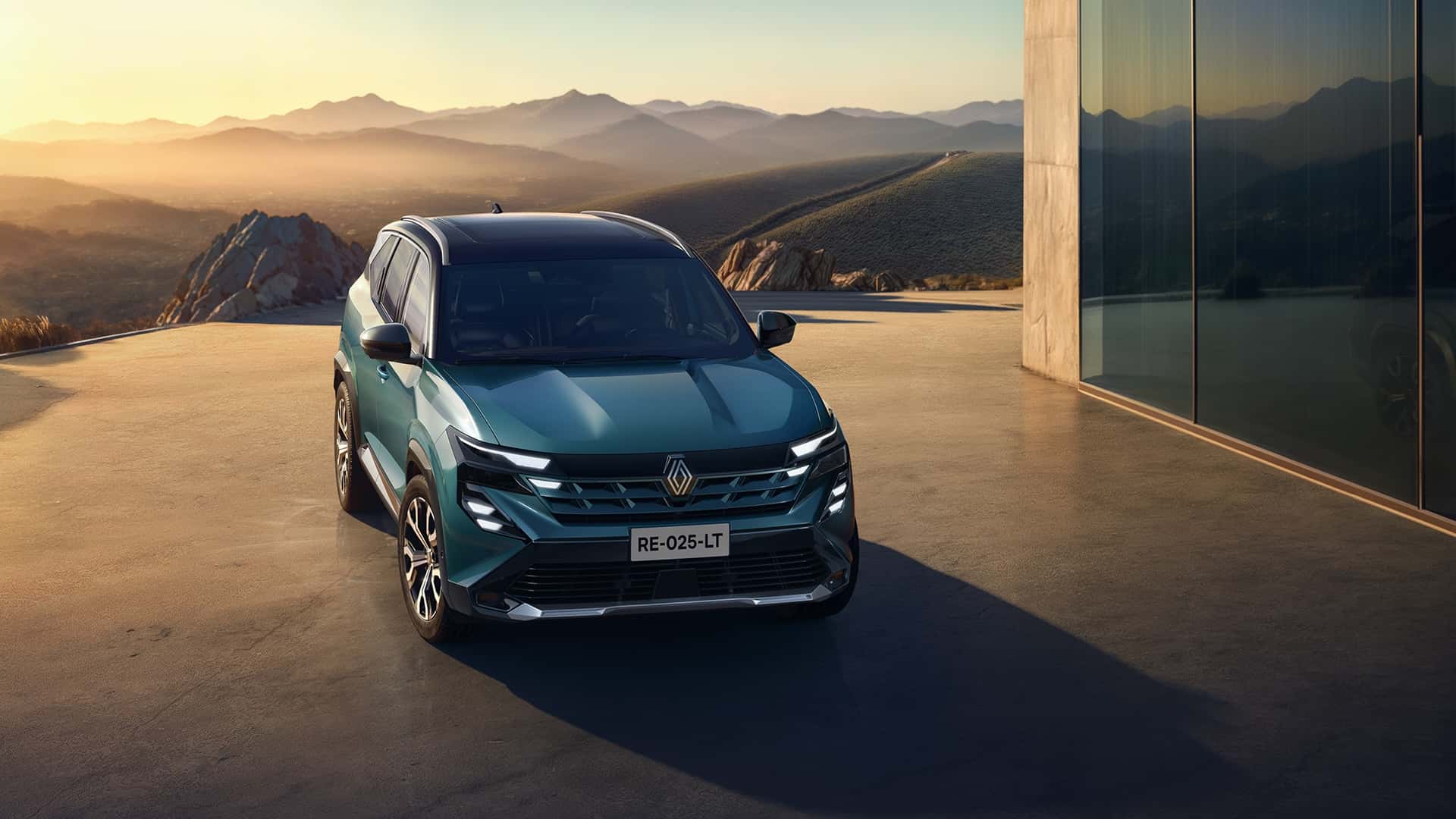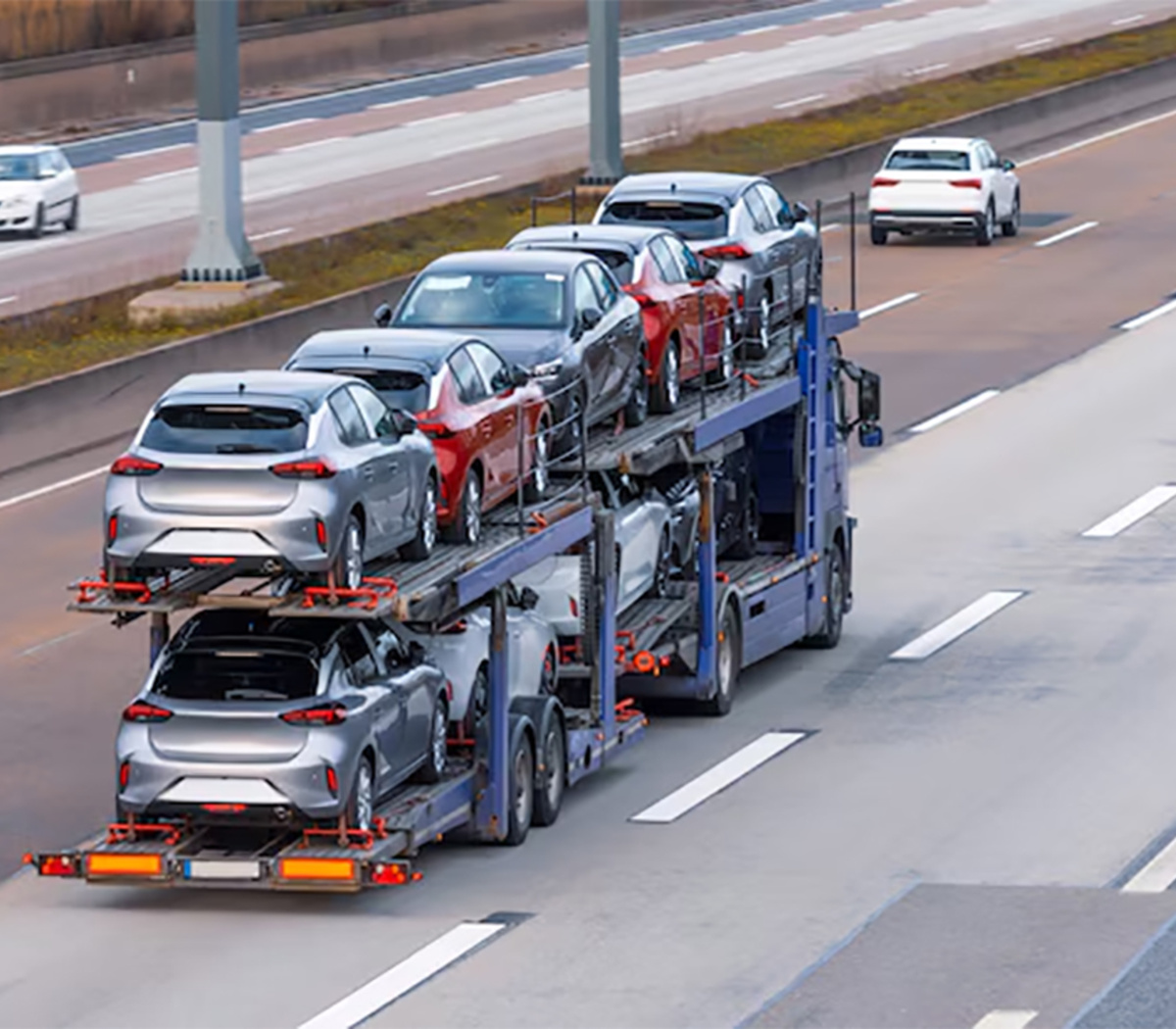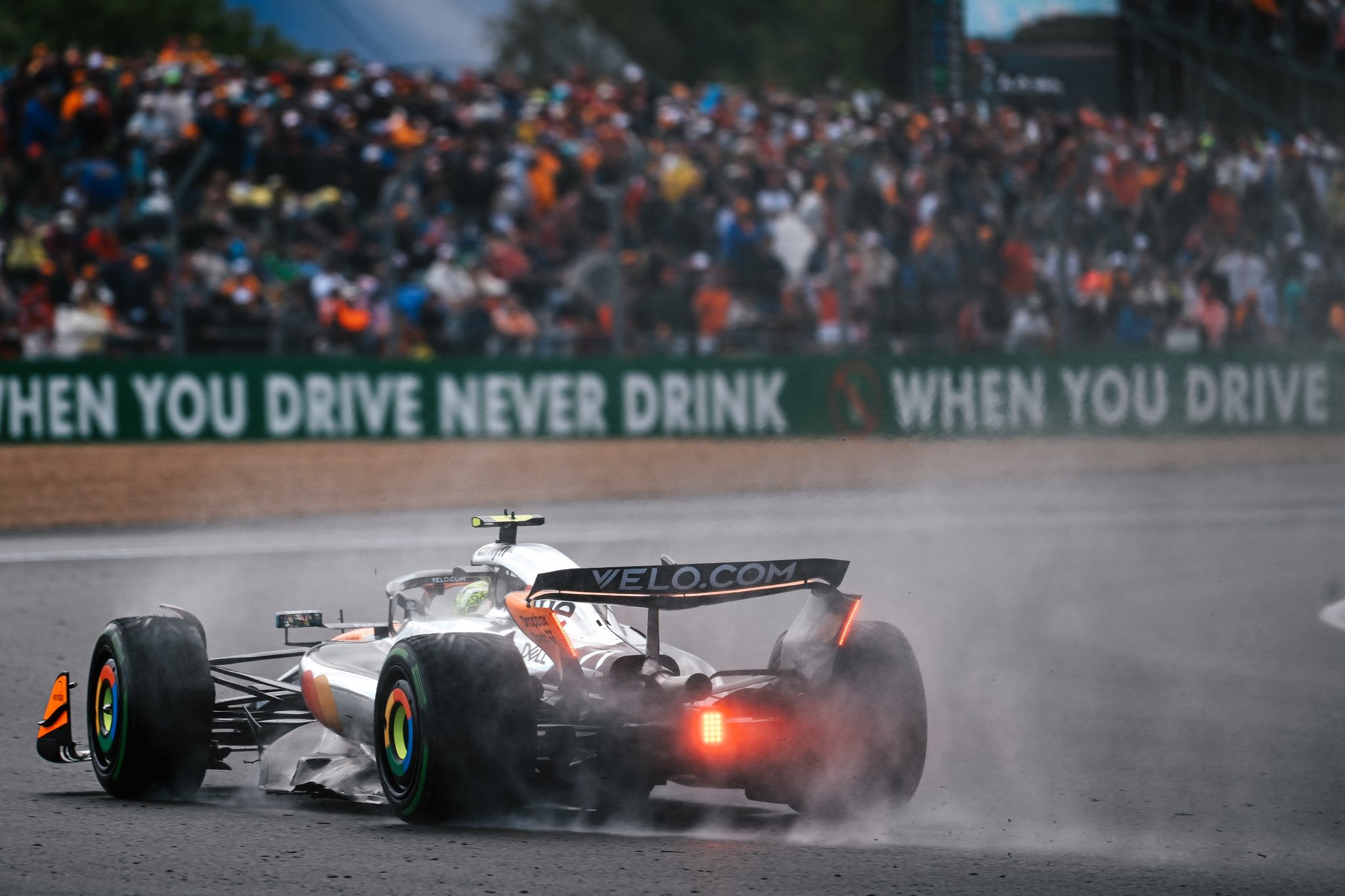HUAYRA CODALUNGA, PAGANI “VOLVIÓ” A LE MANS

17/06/2022. Desvelado por los Sport de los 60/70, y más concretamente, por el Porsche 917, el diseñador-constructor argentino le da una nueva vuelta de tuerca a su fantasía y emulando la versión LH (LangHeck/Cola Larga) de aquellos monstruos, agrega 360 mm de elegancia a la silueta Huayra, exhibe sin pudor la cuádruple salida de los escapes del V12 y le quita 70 kilos, pero le sube el precio: siete millones de euros!!!...
Más concretamente que en Le Mans, Horacio Pagani, se enfocó en la solución aerodinámica de los Sport de los 60/70 para afrontar la recta de más de cinco kilómetros del circuito de La Sarthe, donde tienen lugar las míticas 24 horas: Les Hunaudières. Icónico tramo que supo ser, antes de las dos chicanas de 1990, un desafiante banco de pruebas para la velocidad máxima de los Sport que disputaban la gran carrera.
A tal punto, que para optimizar la velocidad máxima en ese sector, que ocupa más del 40% del recorrido completo del circuito de La Sarthe (13,6 kilómetros) no fueron pocos los que prolongaron la cola de sus autos para que el aire que fluía a través de la carrocería a gran velocidad, no se convirtiera en una estela turbulenta que no hacía más que restringir la velocidad máxima de los autos.
Allí fue donde un insospechado WM-Peugeot logró lo máximo en velocidad-punta con 407 km/h y donde los fantásticos 917 LangHeck -que tanto sedujeron a Pagani- orillaron los 400 km/h...
La resultante de esta breve reseña, según cuenta la historia, se consolidó con la sugerencia de dos clientes de Pagani, seguramente, tan seducidos por el tema como el propio Horacio Pagani y así comenzó a gestarse el Huayra Codalunga (Cola larga, en italiano).
“Este será un Huayra especial, del que solamente haremos cinco unidades –ya está lista la primera- y que será sólo para clientes de Pagani con status alto, propietarios de otros Pagani. Costará unos siete millones de euros y vas a ver, será muy bonita. Te adelanto algunas fotos, pero en nombre de la amistad que tenemos, te pido que no las publiques hasta que el modelo sea de dominio público”. Fieles a la relación y a ese compromiso, aquí ilustramos la presentación con las citadas fotos –que adelanté ayer en twitter- una vez que se dio a conocer la existencia de “la Codalunga”, al decir de Pagani...




El Pagani Huayra Codalunga es poco menos que el debut de la división especializada de Pagani conocida como 'Pagani Grandi Complicazioni', autora del diseño. El proyecto comenzó en 2018 cuando dos clientes se acercaron a Pagani con un pedido especial de una versión de cola larga a medida, y que Pagani describió como un aporte “verdaderamente colaborativo”.
La inspiración de Da Vinci, siempre presente como guía en los arrebatos de Pagani, una vez más motivó un resultado magnífico: el Huayra Codalunga luce una hermosa cubierta trasera del motor que es 360 mm más larga que la del Huayra estándar. El vehículo se estrecha más elegantemente que la silueta del Huayra básico, dando la impresión de que fue diseñado para ser así desde su nacimiento.
No hay rejilla trasera en el Codalunga, por lo que las salidas de escape cuádruples del clásico Mercedes-AMG Pagani V12 están expuestas en forma más evidente, más cruda e intensamente, y hasta con...orgullo!
Según Pagani, el espíritu aquí imperante fue en realidad 'quitar en lugar de agregar', lo que resultó en 70 kilos menos a favor del Codalunga respecto a la versión estándar (1.280 contra 1.350 kilos)
Esto, combinado con el “doce en V” de 840 CV, capaz de generar 1.100 Nm de torque y la mayor eficiencia aerodinámica por el diseño de cola larga significa que el nuevo Pagani debería ser bastante más veloz y dinámico. El Codalunga mantiene la caja AS7, transmisión que será reemplazada por una caja manual en el nuevo C10, tal cual nos comentara el propio Horacio cuando nos adelantó el modelo que se lanzará en Septiembre.
El Codalunga viene en esquemas de pintura bastante neutros, semimate o mate, que hasta intervienen en el interior y que, según Pagani, se eligieron especialmente para evocar los autos de la década de 1960/70. Los elementos de fibra de carbono expuestos también destacan al Codalunga en un hábitat muy “cargado” y algo barroco para nuestro gusto, donde la gamuza y el cuero agregan un toque de clase a los asientos y tapizado general.
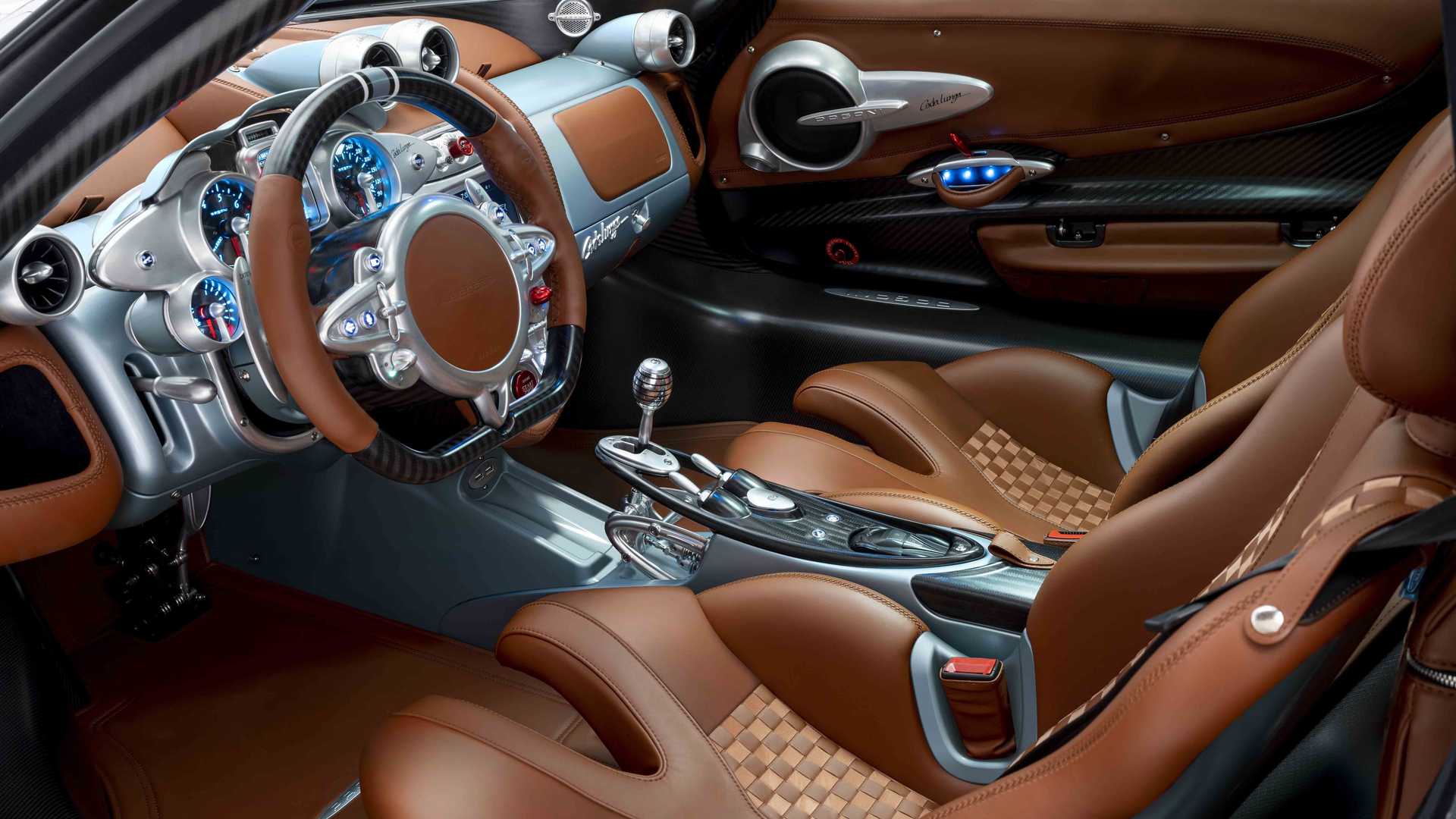
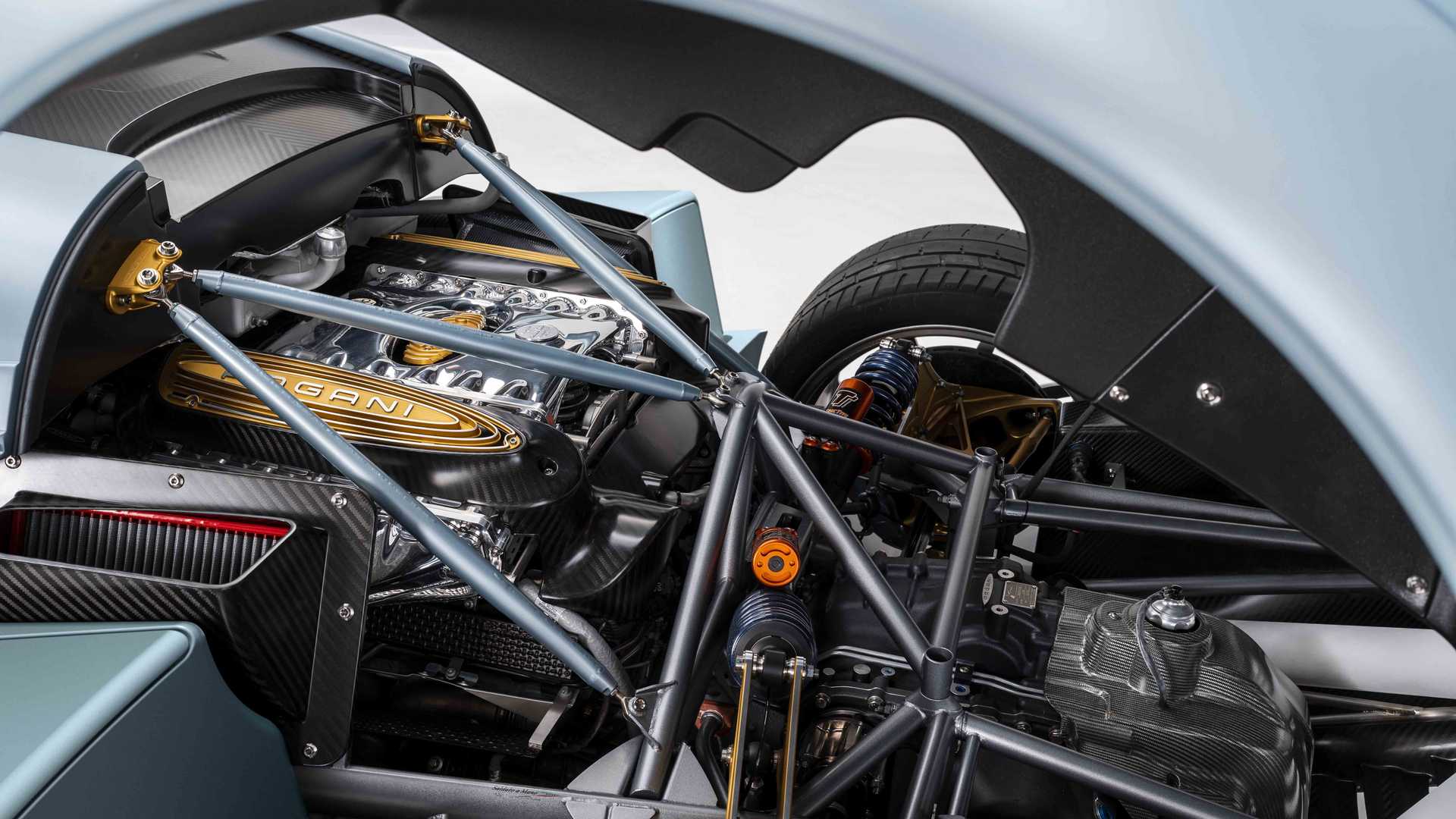
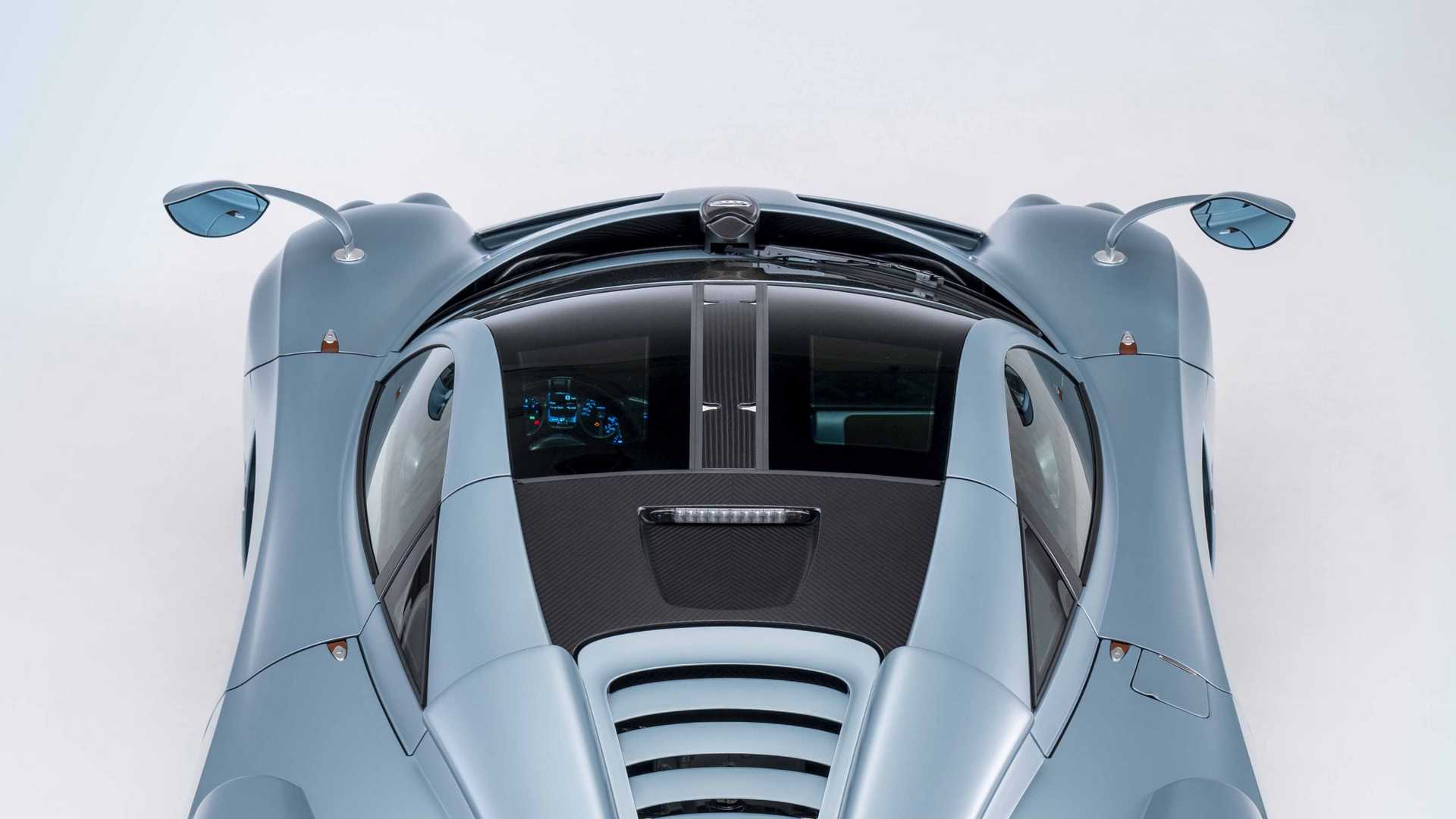
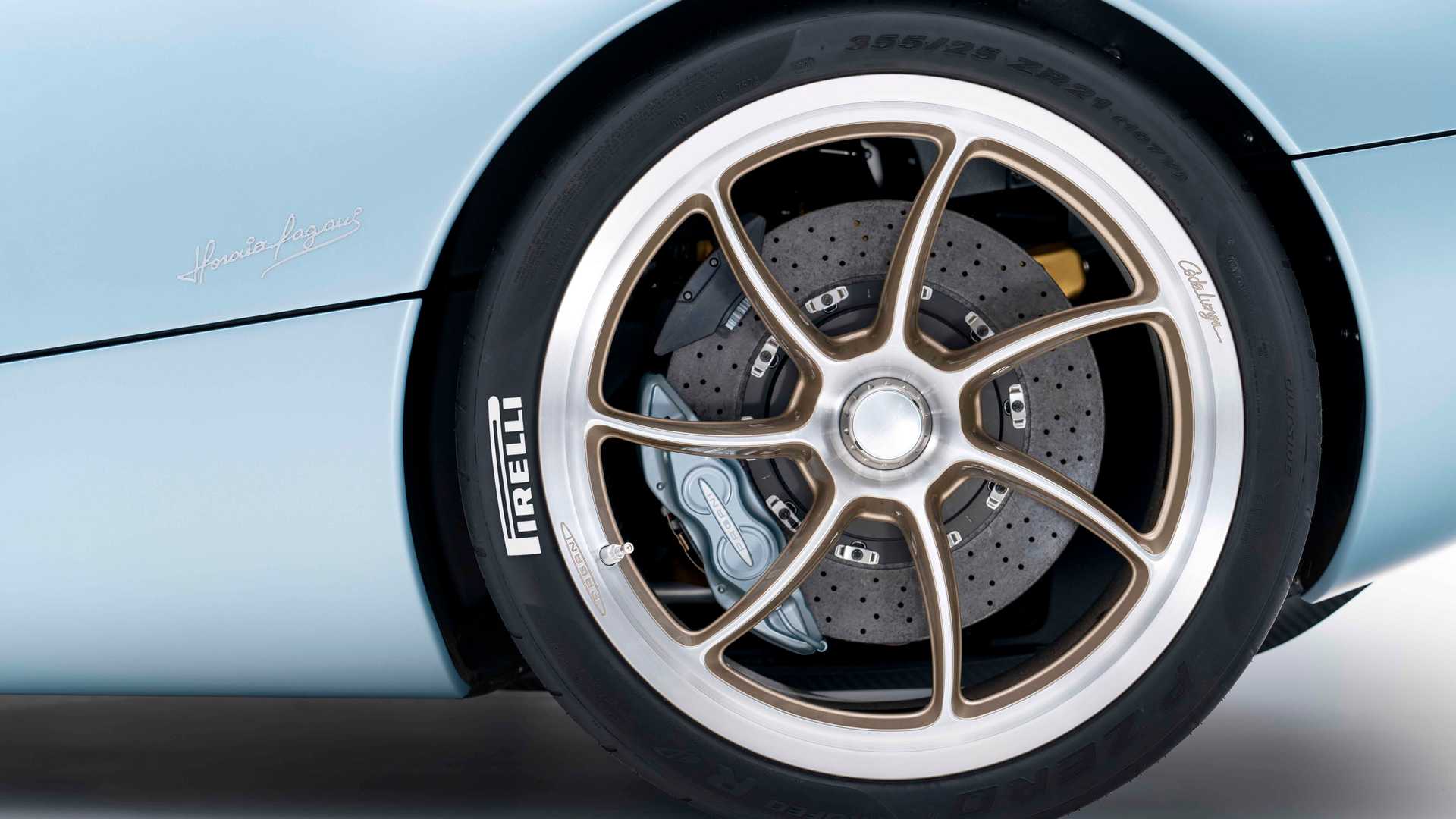
Comunicado de prensa de Pagani Automobili
“Pagani Huayra Codalunga, Grandi Complicazioni on Wheels”
A tribute to the timeless shapes of the Italian coachbuilders and racecars of the ‘60s, presenting clean lines and sinuous, elegant shapes
A project born from the joint vision of client and designer
Limited production of just five tailor-made examples, all sold-out, with prices starting from € 7 million
Created by the dedicated division for special projects: Pagani Grandi Complicazioni.
16 June 2022 - San Cesario Sul Panaro - Pagani Automobili is delighted to present the latest bespoke creation from Horacio Pagani: the Huayra Codalunga, a limited edition of just five vehicles, produced in close collaboration with clients. Beneath the elegant and sinuous shape lies state-of-the-art Pagani mechanical engineering. Approved for road use all over the world, the price of this new hypercar starts from € 7 million. A collaborative project, bringing together many hearts and minds...
“A client is not someone who only buys from you once. A real client comes back again and again" - Horacio Pagani, Founder & Chief Designer, Pagani Automobili.
In 2018, two Pagani collectors asked Horacio to produce a long-tail version of the Pagani Huayra Coupé, with the idea of creating an elegant hypercar with a clean and streamlined design, a model which would feel at home on the roads as well as on display at international Concours events.
The clients, who had been actively involved in the development of the project, liaised directly with Pagani Grandi Complicazioni, the re-branded Special Projects division, that focuses on creating one-offs and few-offs vehicles.
“There are virtually infinite possibilities for designing and customizing these vehicles. Each project is the culmination of a long and thorough journey, working with the client to interpret their preferences and desires, with a shared ambition and combined effort from everyone to create a work of art befitting the Pagani name. A cross-functional team has supported the project meticulously from creation through design and development, to help us realize our clients’ vision.” Lorenzo Kerkoc - Head of Pagani Grandi Complicazioni.A considerable undertaking
Even though the project is limited to just five units, significant resources have been deployed to create a hypercar that would comply with global regulatory requirements and be fully certified.
In line with the Pagani philosophy, the Huayra Codalunga was designed down to the smallest detail in accordance with the creative principles of the great polymath Leonardo da Vinci, an inexhaustible source of inspiration, according to which Art and Science can exist in perfect harmony.
It took two years of working closely with the client to finalize the styling concept. Two models were built, one at 1:4 scale and the other full size, used for the latest considerations with clients and last refinements before starting production of all necessary components.
“All Pagani projects are born from visions and dreams, and some of the most iconic and exclusive Pagani cars stem from the vision and dreams of clients. In 2009, this led to one of the most iconic Zonda models, the Zonda Cinque. Pagani Automobili is capable of developing these bespoke projects for single clients, much like the Coachbuilders in the ‘60s, but in compliance with today’s international homologation requirements. Specifically, one of the five cars will be certified for the U.S. market*. Pagani Grandi Complicazioni is able to deliver series production quality for ultra-exclusive pieces.” Hannes Zanon - Commercial Director
Less is more"
“We decided to use the simple linear style of the Huayra Coupé as the starting point. We made the Huayra Codalunga longer and smoother, as if it had been caressed and molded by the wind, to design lines that were even more elegant than the coupe. We drew inspiration from the long tails of the 1960s that raced at Le Mans, which had very clean lines. The Huayra Codalunga comprises very few essential elements; we have taken away rather than added. Simplifying is not at all straightforward, and this vehicle is, above all, the result of a complex pursuit of simple ideas.” - Horacio Pagani.
The coachbuilders of the ‘60s were inspired by aircraft designs and, in a relentless quest for speed and low drag, created some of the most iconic shapes in the automotive history. At the time, large body panels created by hand in aluminum alloy were the result. Today, Pagani uses its know-how in advanced composite materials to create a bodywork that follows this inspiration.
The rear engine cover, which has a footprint of more than 3.7 m2, and is 360 mm longer than the one of the Huayra Coupé, conceals a mechanical prodigy: the Pagani V12, which, on this series, is capable of developing 840 CV with 1,100 Nm of torque.
The lack of rear grilles makes space for an unobstructed view of the Codalunga’s exhaust system, which is made from titanium and weighs only 4.4 kg (9.7 lb). The special ceramic coating completes the homage to the racing cars of Le Mans and the symphony that emanates from the signature four tailpipes is a tribute to automotive passion.
The work “to take away rather than add” resulted in a record weight of just 1,280 kg (2,822 lb) and extremely high aerodynamic efficiency, helped by the car’s shape and extra length. The four flaps with variable profiles represent the very latest in active aerodynamics, a feature which had its world preview in 2011 and which has been subsequently refined with each model.
Trim
“The colors and materials also recall the cars of the 1960s. The paint on the outside blends into elements of the cockpit while structural parts retain their exposed carbon fiber finish. The artisan touch can also be seen on the internal finishes with woven aged suede leathers." - Alberto Piccolo, Concept and Interior Designer, Pagani Automobili.
On this special model, the choice was made to use neutral colors and semi-matte or fully matte paints, to evoke the shades of the past and to bring out the simplicity of the car’s design. This concept also plays a fundamental role on the inside, where the seats are finished with a woven leather/nubuck upholstery and aluminum components are machined from a single block. This recalls the manual techniques of the past, when the artisan would polish each element by hand. Work which is still performed today, a tradition kept alive by the experts in the center of the world sports car industry, Italy’s Motor Valley.
Technical Specifications
Engine: Pagani V12 60° 36 valves 5,980 CC, twin turbo
Power: 840 CV (618 kW) at 5,900 rpm
Torque: 1,100 Nm from 2,000 rpm to 5,600 rpm
Transmission: Pagani by Xtrac, transverse mounted 7-speed sequential
Brakes: Pagani by Brembo carbon-ceramic self-ventilated disc brakes: diameter 410 x 38 mm with 6-piston one-piece calliper at the front; diameter 390 x 34 mm with 4-piston one-piece calliper at the rear
Wheels: One-piece APP Tech in forged Avional, 20” at the front and 21” at the rear
Tyres: Pirelli PZero Corsa 265/30 R20 at the front and 355/25 R21 at the rear; Pirelli SottoZero for driving in low temperatures
Suspension: Active forged aluminium alloy, independent double wishbone with variable-pitch helical springs and coaxial dampers
Chassis: Carbon-Titanium HP62 G2 and Carbon-Triax HP62 monocoque
Dry Weight: 1,280 kg (2,822 lb)
